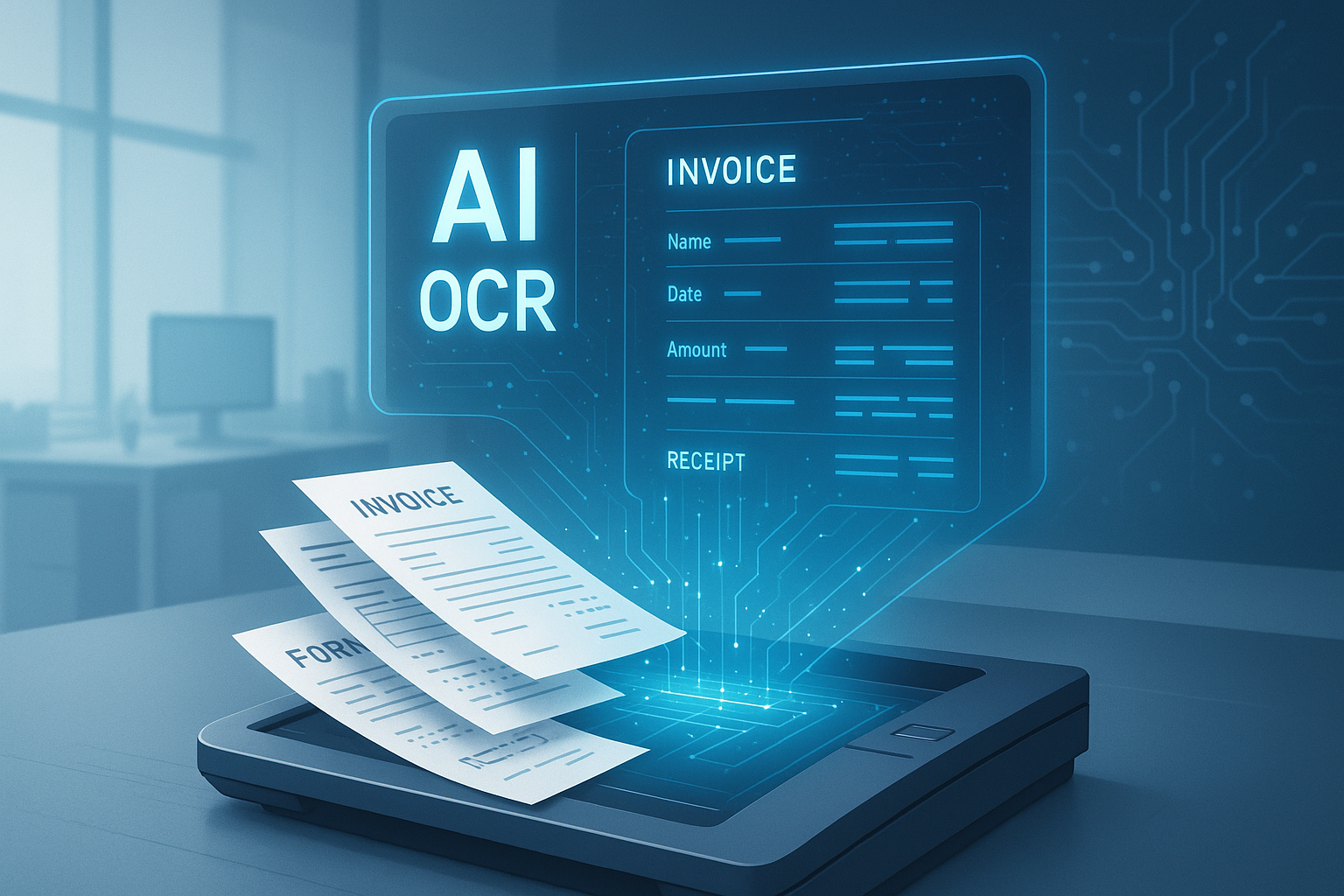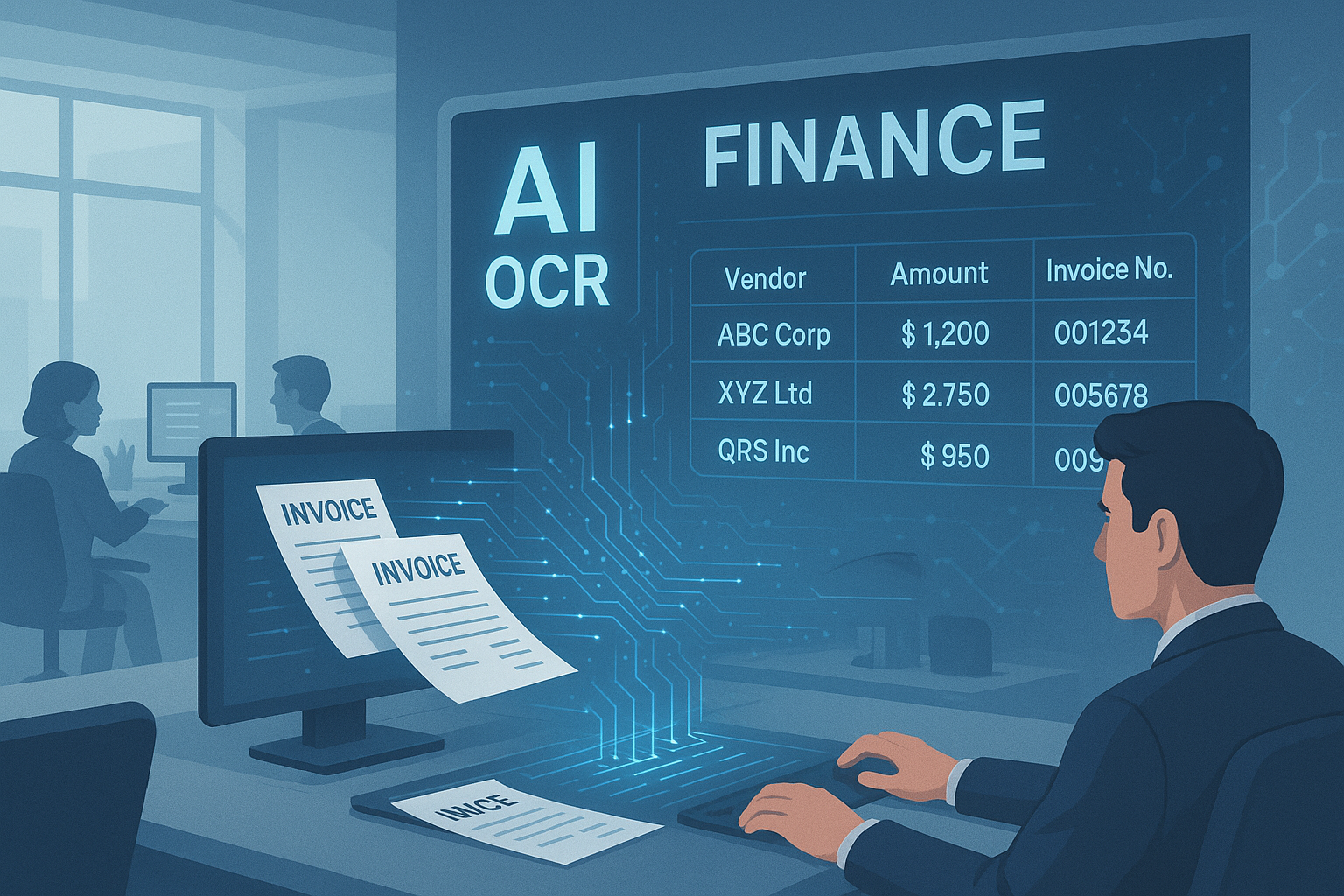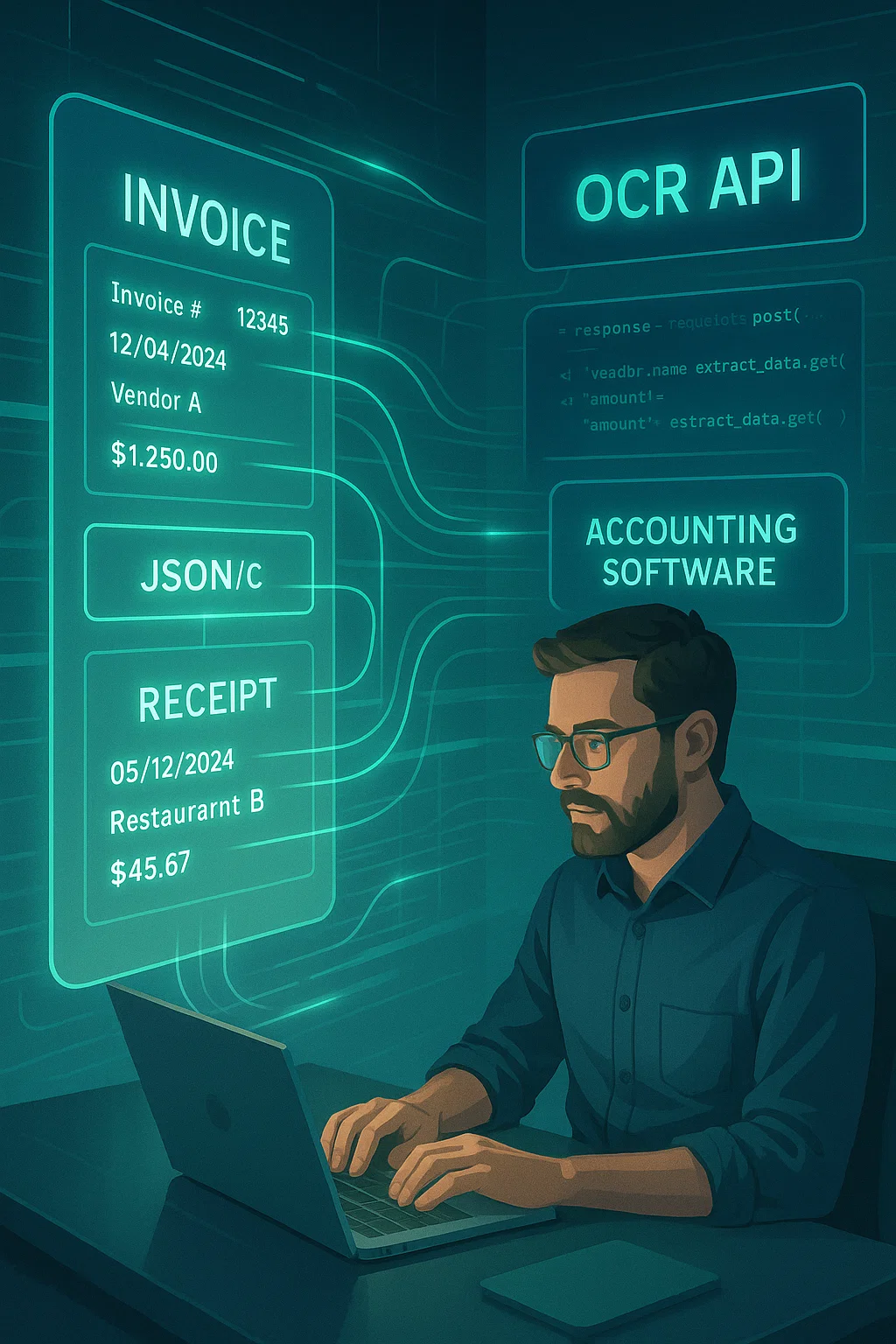OCR in Finance: Transforming Document Processing for Modern Financial Operations
Discover how OCR finance solutions are revolutionizing financial document processing, reducing manual data entry, and improving accuracy across accounting and financial operations.

Table of contents
OCR in Finance: Revolutionizing Financial Document Processing
In today's fast-paced financial world, the sheer volume of paperwork can be overwhelming. From invoices and receipts to contracts and statements, financial professionals spend countless hours manually processing documents. This is where OCR finance solutions are changing the game.
Optical Character Recognition (OCR) technology is transforming how financial institutions and departments handle documentation, offering unprecedented efficiency and accuracy. Let's explore how this technology is reshaping financial operations and why it matters to your organization.
What is OCR in Finance?
OCR in finance refers to the application of Optical Character Recognition technology specifically for financial document processing. This technology converts different types of financial documents—whether physical or digital—into machine-readable text that can be edited, searched, and stored electronically.
Finance OCR software captures text from documents such as:
- Invoices and purchase orders
- Bank statements and checks
- Receipts and expense reports
- Tax documents
- Financial contracts and agreements
- Loan applications
The technology has evolved significantly from simple character recognition to sophisticated systems that can understand document context, identify form fields, and extract specific financial data points with remarkable accuracy.
The Evolution of Financial Document Processing
Traditional document processing in finance has been notoriously labor-intensive. Consider the typical accounts payable workflow: receiving paper invoices, manually entering data into accounting systems, routing for approvals, and filing physical copies for record-keeping.
This approach creates several challenges:
- Time-consuming manual data entry
- High error rates from human mistakes
- Delayed processing and payment cycles
- Storage costs for physical documents
- Difficulty in searching historical records
Finance OCR software addresses these pain points by automating the capture and processing of financial information, significantly reducing the need for manual intervention.
Key Benefits of OCR in Financial Operations
Dramatic Time Savings
Financial document automation through OCR can reduce processing times by up to 80%. Tasks that once took days can be completed in hours or even minutes. Staff members previously dedicated to data entry can focus on higher-value activities like financial analysis and strategic planning.
Enhanced Accuracy and Compliance
Human error is inevitable in manual processing. OCR accounting solutions minimize these errors by consistently extracting data with high precision. This improved accuracy is particularly valuable for regulatory compliance, where mistakes can lead to penalties or audit issues.
Cost Reduction
The financial impact of implementing OCR extends beyond labor savings. Organizations typically see reduced costs related to document storage, error correction, and late payment penalties. Many businesses report ROI within months of implementation.
Improved Cash Flow Management
With faster invoice processing, companies can take advantage of early payment discounts or optimize payment timing for better cash flow management. The visibility into financial documents also helps with forecasting and financial planning.
Practical Applications of OCR in Finance
Accounts Payable Automation
Accounts payable automation represents one of the most impactful applications of OCR in finance. The technology can extract critical information from invoices—vendor details, invoice numbers, line items, amounts, and due dates—and automatically enter this data into accounting systems.
This automation accelerates approval workflows, reduces processing costs, and improves vendor relationships through timely payments.
Expense Management
Employee expense reporting becomes significantly more efficient with OCR. Staff can simply photograph receipts using mobile devices, and OCR technology extracts the relevant information, categorizes expenses, and populates expense reports automatically.
Bank Statement Reconciliation
OCR technology streamlines the reconciliation process by automatically extracting transaction data from bank statements and matching it against internal records. This reduces a traditionally time-consuming task to a largely automated process requiring only exception handling.
Tax Document Processing
During tax season, finance departments and accounting firms process enormous volumes of tax-related documents. OCR simplifies this by extracting data from W-2s, 1099s, and other tax forms, reducing preparation time and minimizing errors.
Choosing the Right Finance OCR Software
When evaluating OCR solutions for financial applications, consider these key factors:
Accuracy and Recognition Capabilities
Look for solutions with high accuracy rates specifically for financial documents. The best systems can handle various document formats, recognize financial terminology, and extract structured data even from complex layouts.
Integration Capabilities
Effective OCR solutions should integrate seamlessly with your existing financial systems, including ERP platforms, accounting software, and document management systems.
Security Features
Financial documents contain sensitive information, making security paramount. Ensure any OCR solution includes robust security features like encryption, access controls, and compliance with financial regulations such as SOX or GDPR.
Scalability
As your organization grows, your document processing needs will expand. Choose a solution that can scale with your business, handling increasing document volumes without performance degradation.
Implementation Best Practices
Successful implementation of OCR in finance requires careful planning:
- Start with a pilot project focused on a specific document type or process
- Establish clear metrics to measure success and ROI
- Provide adequate training for staff who will use the system
- Create standardized procedures for exception handling
- Regularly review and optimize the system based on performance data
The Future of OCR in Finance
OCR technology continues to evolve, with artificial intelligence and machine learning driving significant advancements. Next-generation finance OCR software will offer:
- Improved handling of unstructured documents
- Better understanding of context and document intent
- Predictive capabilities for financial decision-making
- Enhanced fraud detection through pattern recognition
- Greater automation of end-to-end financial processes
Conclusion
OCR in finance represents a transformative technology that addresses the challenges of traditional document processing. By automating data extraction and processing, financial institutions and departments can achieve significant improvements in efficiency, accuracy, and cost control.
As the technology continues to mature, organizations that embrace OCR for financial document processing will gain competitive advantages through streamlined operations and better utilization of their financial professionals' expertise. The question is no longer whether to implement OCR in finance, but how quickly you can leverage this technology to transform your financial operations.
Related Blog Posts

Revolutionizing Document Management with OCR Technology
Explore how AI-powered OCR technology transforms document management by digitizing text, streamlining workflows, reducing errors, and boosting efficiency across industries.

Smarter Invoice Processing: The OCR Advantage for Finance Departments
Learn how OCR technology revolutionizes invoice processing for finance departments by automating data extraction from invoices, reducing costs, and boosting accuracy. This guide covers OCR's benefits, AI enhancements, and practical steps to transform accounts payable operations

OCR APIs: The Secret Weapon Smart Finance Teams Are Using Right Now
Discover how OCR APIs transform finance teams by automating data entry from receipts and invoices, cutting processing time by up to 85%, and boosting accuracy to 98%. This guide shares real-world insights for modernizing financial workflows.
Ready to Transform Your Lending Process?
See how DocsAPI's AI-powered industry classification can help you process loans faster, improve accuracy, and scale your operations.
